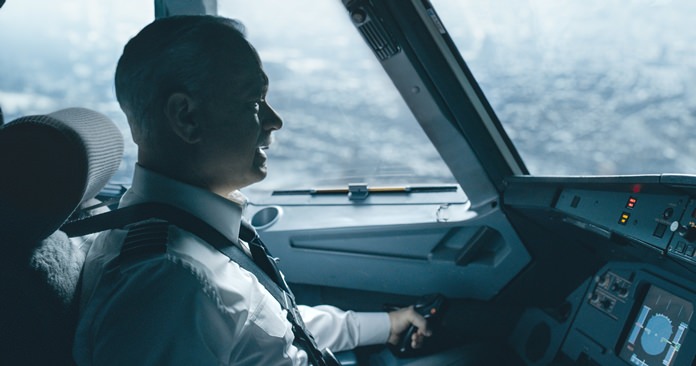Los Angeles (AP) – In “Sully,” Clint Eastwood’s haunted and sterile docudrama of Capt. Chesley Sullenberger’s 2009 landing of Flight 1549 on the Hudson, Eastwood has drained away all the superficial, rah-rah heroism of Sullenberger’s great feat, but he has also sucked the life out of it.

“Sully” is every bit an Eastwood picture. Instead of the rush of euphoria that the “Miracle on the Hudson” swept through a New York accustomed to only tragedy from the air, we get a weary parable that, as Eastwood has often done, pulls the curtain away from a celebrated public figure and reveals the inner trauma and sense of responsibility that lies inside a regular man thrust into an unwanted spotlight.
Sullenberger, played with typical dignity and sensitivity by Tom Hanks, is not celebrated here with a parade of a movie. He is beset by demons and anxieties, and the almost comically harsh scrutiny of an aviation safety panel, which, relying on automated flight simulations, believes Sullenberger could have safely returned to LaGuardia or made it over the New Jersey shoreline to Teterboro.
Their snide, judgmental presence is there throughout “Sully,” as they try to second guess his decision-making. It’s an exaggeration. The film’s climactic grilling of Sullenberger at a public hearing was referred to in news reports as “gentle, respectful and at times downright congenial.”
But Eastwood and screenwriter Todd Komarnicki working off of Sullenberger’s book “Highest Duty: My Search for What Really Matters,” had to find drama somewhere. The entire flight lasted less than six minutes. It was just 208 seconds from bird strike to the frigid Hudson.
How do you make a film out of mere moments, handled with preternatural calm? Eastwood lingers in its aftermath, as Sully remains holed in a Manhattan he has little love for. The narrative is fractured, flashing backward and forward, into the pilot’s past and occasionally into his nightmares. Hanks, white haired and subdued, finds Sullenberger’s essence not in the miraculous but in the mundane: A man just doing his job, not so unlike his “Captain Phillips.”
And though the film bears his name, “Sully” is really a two-hander. With Sullenberger throughout is his co-pilot Jeff Skiles (a top-notch Aaron Eckhart), his partner in flight and on the ground. They huddle together in midnight runs and in testimony, leaning on each other through the surreal media storm.
Eastwood moves slowly to the landing but gives it its full due. Filmed on IMAX, his big, clear images nevertheless remain somber — as does Eastwood’s own quiet score — in the big, awaited moment. Nowhere is much of a sense of New York or the cathartic relief that lifted the city.
Instead, “Sully” remains, stubbornly, a refraction of Sullenberger’s interior, as filtered through Eastwood’s elegiac lens. “I eyeballed it,” is how the pilot explains his intuitive response, built up over 42 years of flying. It’s not hard to feel Eastwood’s own identification with the man. He, too, is an old hand who works quickly: workmanlike and instinctually, “eyeballing” it. You can imagine Eastwood, too, up there on the stand responding to what computers say he should have done differently.
“Life’s easier in the air,” Skiles and Sullenberger agree. Eastwood, of course, does too. Only being aloft for him is to be in the director’s chair, far from other concerns. His focus in “Sully” is both its greatest attribute (this is, after all, a serious and thoughtful film that sees a universally known event through a fresh perspective) and the reason for its disappointing emptiness.
In testimony, Sullenberger criticizes the simulators for “taking all the humanity of the cockpit.” Eastwood has put it back in. But the story of Flight 1549 was bigger than that.
“Sully,” a Warner Bros. release, is rated PG-13 by the Motion Picture Association of America for “some peril and brief strong language.” Running time: 96 minutes. Two and a half stars out of four.




